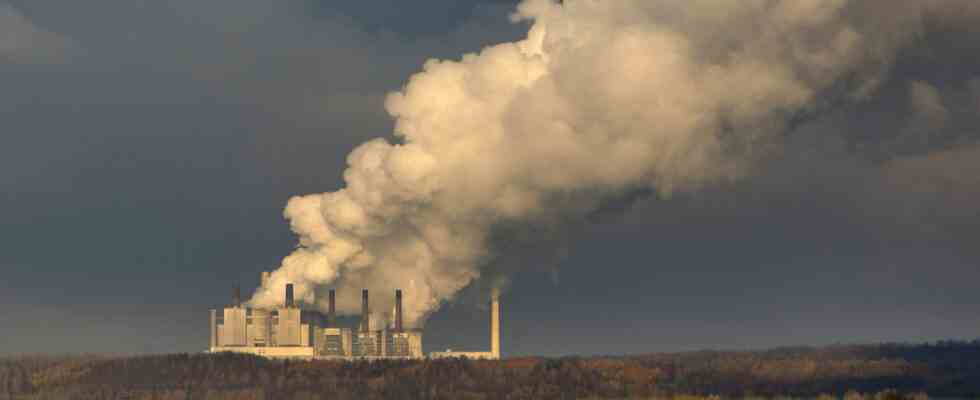Status: 08/16/2022 08:10 a.m
Coal-fired power plants are supposed to support the power supply during the gas crisis and go back to the grid. But many piles are still in reserve. There are many things standing in the way of your restart.
Mighty and gray, the cooling tower of the Bexbach power plant stands out behind a few trees. The vapor trail of an airplane stretches across its opening. Otherwise the sky is blue. No water vapor rises from the cooling tower; nor wafts of smoke from the chimney next door. With 726 megawatts, the most powerful coal-fired power plant in Saarland is still in the grid reserve.
The energy company STEAG would have liked to have brought the power plant back to the market long ago. Since July 14, a regulation by the federal government has also allowed this. In order to save gas during the energy crisis, hard coal-fired power plants from the so-called grid reserve are allowed to go back into operation. But hardly any energy supplier takes advantage of the offer.
Many questions still open
In practice, many details are still unclear, explains Michael Lux, manager of the power plant in Bexbach. The problem becomes clear a few hundred meters behind the cooling tower: embedded between the turbine building and a small hill is the coal store of the power plant – a field several hundred meters long and wide that is reminiscent of a lignite opencast mine. At the edge of the field, a green bucket-wheel excavator is waiting for work; next to it a conveyor belt made of rubber. Around 180,000 tons of coal can be stored on the site, a supply for 30 days. But at the moment there is only a fraction of it.
Lux does not yet know how the coal will get from the port of Rotterdam to Bexbach. On the one hand there is the problem of drought, which means that the Rhine has a low water level and ships cannot sail with full loads. On the other hand, coal transport over land is only possible to a limited extent.
According to Lux, logistics providers such as DB Cargo have too few wagons, locomotives and staff. In recent years, capacities have been repeatedly reduced and relocated. In addition, the rail infrastructure in Germany is being renovated in many places. According to Lux, many routes are therefore not fully available. Even if the coal storage were full, six trains per week would have to deliver new coal during ongoing operations – a logistical challenge that cannot be mastered at the moment.
Problems with financing too
In addition to the problem of how the coal bought abroad gets to Bexbach, other details are still open: for example the question of how the fuel is paid for. In mid-August, a tonne of hard coal costs around 325 US dollars on the world market.
In order to fill the warehouse in Bexbach, STEAG would have to buy 180,000 tons of coal. Converted to 325 euros, that would cost the group almost 60 million euros – a sum that the energy supplier cannot simply raise. STEAG is therefore demanding pre-financing support.
Also whereabouts of the coal still open
According to Lux, another problem is that it is not clear what happens to the coal when it is not used. Theoretically, it could happen that STEAG is left with a large part of the expensive coal it has bought: a financial nightmare scenario for the company. STEAG is currently holding talks with the Federal Network Agency and the transmission system operators to clarify all of these open questions.
Lux is confident that answers will be found. Nevertheless: Only when this has happened will the energy supplier decide whether or not to return to the market with its power plants. So it could be a while before steam from the power plant can be seen again above the cooling tower in Bexbach, in addition to contrails.

